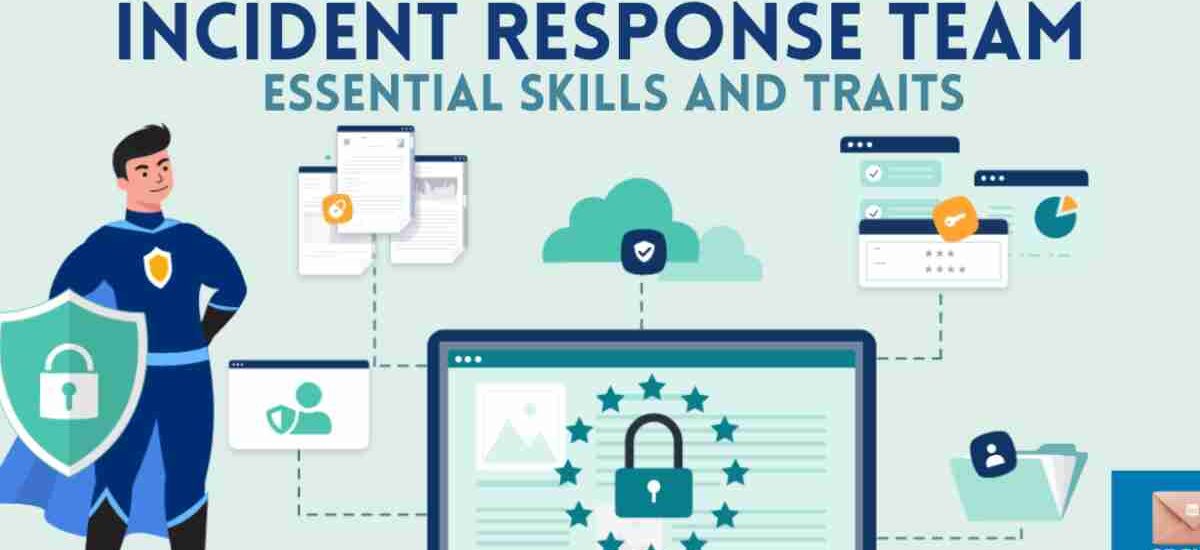Introduction
In today’s digital age, cybersecurity is more critical than ever, and at the heart of this domain lies Incident Handling and Response (IH&R). Every organization, regardless of its size or industry, faces the risk of cyber threats. Whether it’s a ransomware attack, data breach, phishing scam, or insider threat—effective incident response is vital to minimize damage and recover quickly.
This comprehensive guide will walk you through the career path of Incident Handling & Response, from foundational knowledge to advanced roles, certifications, salary insights, and how to kickstart your journey in 2024.
What is Incident Handling and Response?
Incident Handling and Response refers to the structured process of identifying, investigating, mitigating, and recovering from cybersecurity incidents. It ensures that an organization can respond to threats in a timely and effective manner.
The Core Stages of Incident Response
- Preparation – Establishing policies, tools, and a trained incident response team.
- Identification – Detecting signs of a potential security incident.
- Containment – Limiting the spread of the threat.
- Eradication – Removing the root cause and malicious artifacts.
- Recovery – Restoring systems and services to normal operations.
- Lessons Learned – Reviewing the incident to improve future response.
Why Choose a Career in Incident Handling & Response?
1. High Demand & Job Security
As cyberattacks become more sophisticated, companies are investing heavily in IH&R professionals. The need for skilled responders is outpacing supply, offering strong job security.
2. Diverse Career Opportunities
From SOC Analysts to Incident Response Managers, this field provides multiple entry and growth points.
3. Challenging & Rewarding
Incident handlers are digital detectives. They solve real-world cyber puzzles and help protect businesses and nations.
4. Competitive Salary Packages
According to industry reports, mid-level professionals in incident response earn an average of $90,000–$130,000 per year, with senior roles exceeding $150,000+ annually.
Essential Skills for Incident Handlers
To thrive in this field, aspiring professionals must develop both technical and soft skills:
Technical Skills
- Network Security and Traffic Analysis
- Malware Analysis
- Digital Forensics
- SIEM (Security Information and Event Management) tools
- Endpoint Detection & Response (EDR) tools
- Knowledge of Operating Systems (Windows, Linux, macOS)
- Scripting in Python, Bash, or PowerShell
Soft Skills
- Analytical thinking
- Attention to detail
- Communication and reporting
- Crisis management
- Teamwork and collaboration
Typical Career Path in Incident Handling & Response
Here is a roadmap of how a career can progress in this field:
1. Entry-Level Roles (0–2 years)
Job Titles:
- SOC Analyst (Tier 1 or 2)
- Junior Incident Responder
- Security Analyst
Focus Areas:
- Monitoring security events
- Escalating incidents
- Performing basic triage
Recommended Certifications:
- CompTIA Security+
- Certified SOC Analyst (CSA)
- Splunk Core Certified User
2. Mid-Level Roles (2–5 years)
Job Titles:
- Incident Responder
- Threat Analyst
- Forensic Investigator
Responsibilities:
- Performing in-depth analysis of security incidents
- Containing and eradicating threats
- Conducting root cause analysis
Recommended Certifications:
- Certified Incident Handler (GCIH)
- EC-Council Certified Incident Handler (ECIH)
- CompTIA CySA+
- SANS SEC504 or SEC401
3. Senior-Level Roles (5+ years)
Job Titles:
- Incident Response Team Lead
- Security Operations Center Manager
- Threat Hunter
- Cybersecurity Consultant
Responsibilities:
- Leading IR investigations
- Managing IR teams
- Threat hunting and proactive security
Recommended Certifications:
- Certified Information Systems Security Professional (CISSP)
- GIAC Certified Forensic Analyst (GCFA)
- Certified Cybersecurity Incident Response Manager (CCIRM)
4. Specialized Roles
After gaining experience, professionals can move into niche areas such as:
- Digital Forensics Expert
- Threat Intelligence Analyst
- Malware Reverse Engineer
- Red Team/Blue Team Operations
- Cybersecurity Architect
Tools Every Incident Responder Should Learn
- SIEM Tools – Splunk, IBM QRadar, LogRhythm
- EDR Solutions – CrowdStrike Falcon, SentinelOne, Carbon Black
- Packet Analysis – Wireshark, Zeek (Bro)
- Malware Analysis – Cuckoo Sandbox, IDA Pro, Ghidra
- Forensics – FTK, Autopsy, EnCase
- Threat Intelligence – MISP, ThreatConnect
- Automation & Scripting – Python, PowerShell
Daily Responsibilities of an Incident Handler
- Monitor and analyze logs and alerts from SIEM and EDR tools
- Investigate potential incidents and assess their impact
- Collaborate with IT, Legal, and Compliance teams
- Write detailed incident reports and post-mortems
- Assist in patch management and vulnerability remediation
- Document procedures for future improvements
Incident Handling in Different Environments
1. Corporate
- Focuses on business continuity
- Works closely with IT and compliance teams
2. Government & Military
- Highly regulated environments
- National security and classified data
3. Managed Security Service Providers (MSSPs)
- Works with multiple client environments
- High volume, fast-paced
4. Financial Institutions
- Handles compliance with standards like PCI-DSS, FFIEC
- Deals with large-scale fraud investigations
Incident Response Frameworks You Must Know
- NIST 800-61 Revision 2 – Guide to Computer Security Incident Handling
- SANS Incident Handling Process
- MITRE ATT&CK Framework – Threat modeling and detection
- ISO/IEC 27035 – Guidelines for incident management
How to Get Started in Incident Handling & Response
Step 1: Build a Strong Foundation
Learn computer networks, operating systems, and cybersecurity basics. Free courses from Cybrary, TryHackMe, and Coursera are good starting points.
Step 2: Enroll in a Specialized Program
Look for online bootcamps, university degrees, or courses focused on incident response and forensics.
Step 3: Practice in Simulated Environments
Platforms like:
- RangeForce
- Blue Team Labs Online
- TryHackMe (Blue Team Path)
- CyberDefenders.org
…offer hands-on incident response challenges.
Step 4: Earn Certifications
Choose beginner to advanced certifications based on your current experience and goals.
Step 5: Build a Cybersecurity Portfolio
Include your writeups, incident handling case studies, and GitHub projects.
Salary Expectations in 2025
| Job Title | Experience | Avg. Salary (USD) |
|---|---|---|
| SOC Analyst (Tier 1) | 0–2 yrs | $55,000 – $70,000 |
| Incident Responder | 2–5 yrs | $80,000 – $120,000 |
| Forensics Investigator | 3–6 yrs | $90,000 – $130,000 |
| Incident Response Manager | 5–8 yrs | $130,000 – $160,000 |
| Threat Hunter / IR Consultant | 5–10 yrs | $140,000 – $180,000 |
Common Challenges in This Career
- Burnout due to on-call rotation and high pressure
- Staying updated with evolving threats
- Managing complex and multilayered attacks
- Communicating effectively with non-technical stakeholders
Top Companies Hiring for Incident Response Roles
- Microsoft (DART Team)
- Google (Mandiant)
- CrowdStrike
- Palo Alto Networks
- Cisco Talos
- FireEye
- Amazon Web Services (AWS Security)
- IBM X-Force
- Accenture Security
Final Thoughts
A career in Incident Handling & Response is not just a job—it’s a mission to protect, defend, and respond to the ever-growing threats in the digital world. With cybercrime on the rise, organizations are willing to pay top dollar for professionals who can detect, contain, and eliminate threats before they spiral out of control.
Whether you’re just starting out or looking to pivot into cybersecurity, this field offers a high-impact, high-growth, and high-reward pathway. Stay curious, keep learning, and be prepared—because cyber defenders are the front line of the digital age.






